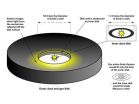(Press-News.org) From The Royal Botanic Gardens, Kew, The University of Western Australia, and the, Kings Park and Botanic Garden, the scientists argue that deliberately increasing the frequency of fires may lead to ecosystem degradation and loss of biodiversity.
In a paper published this month in Trends in Plant Science they acknowledge that as climate change increases the combustibility of vegetation, human lives and property are more at risk.
However, they suggest that prescribed burning – a key practice by most environmental managers – may cause more problems because, they say, there is actually little evidence that Mediterranean-climate plants such as those found in Australia are fire-adapted.
Director of the Royal Botanic Gardens, Kew, and UWA graduate Professor Stephen Hopper said: "Dealing with fire management is a complex business, especially when the dual aims of protection of life and property and of biodiversity conservation coincide.
"Our analysis reveals that it is naive on present evidence to assume that Australian plants are adapted to fire, and that prescribed burning regimes are not only good for the bush but can be applied in any fashion and frequency with impunity. Rather, we should be cautious in prescribed burning practices if biodiversity conservation is an aim, ensuring that good scientific design and adaptive management are applied to local situations, so that we learn as we go.
"Our paper is a plea for better science and closer working relationships between fire managers and scientists to achieve the best outcomes for biodiversity conservation where that is a priority."
The paper's authors argue that the role of fire in engendering adaptive traits in Mediterranean plants has never been tested.
Traits traditionally regarded as evidence of adaption to fire, including smoke-induced germination, co-occur in ecosystems which are not fire-prone and also stimulate germination in plants such as lettuce and tomatoes, they write.
"Mediterranean climates and their unique ecosystems are only found on five per cent of the land surface of the Earth, yet they contain 20 per cent of the plant species of the world. The effective management and long-term protection of their biodiversity is a priority that is being made increasingly difficult by human population pressures and the as-yet not fully understood impacts of climate change," the authors write.
"Preventing an increase in fire frequency – instead of prescribed burning – can be crucial for maintaining soil integrity, water supplies, water quality and biodiversity. Suitable management practices are therefore difficult to predict."
INFORMATION:
Notes to Editors;
For more information please contact the RBG Kew Press Office on 020 8332 5607 or email pr@kew.org
To contact the University of West Australia Press Office, or lead author Don Bradshaw, please email Janine MacDonald on Janine.macdonald@uwa.edu.au or phone (+61 8) 6488 5563 / (+61 4) 32 637 716
Full citation for the paper;
Bradshaw, S.D., Dixon, K.W., Hopper, S.D., Lambers, H. and Turner, S.R. (2011). Little evidence for fire-adapted traits in Mediterranean climate regions. Trends in Plant Science 16, 69-76.
http://www.sciencedirect.com/science/journal/13601385
About the Authors;
The paper's lead author Emeritus Professor Don Bradshaw is a Senior Research Fellow at University of Western Australia's School of Animal Biology. His co-authors are Professor Kingsley Dixon, Director of Plant Science, Kings Park and Botanic Garden, Professor Stephen Hopper, Director of the Royal Botanic Gardens, Kew, Winthrop Professor Hans Lambers, Head of UWA's School of Plant Biology and one of the world's most highly cited plant scientists and Assistant Professor Shane Turner also from UWA's School of Plant Biology.
The Royal Botanic Gardens, Kew is a world famous scientific organisation, internationally respected for its outstanding living collection of plants and world-class Herbarium as well as its scientific expertise in plant diversity, conservation and sustainable development in the UK and around the world. Kew Gardens is a major international visitor attraction. Its landscaped 132 hectares and RBG Kew's country estate, Wakehurst Place, attract nearly 2 million visitors every year. Kew was made a UNESCO World Heritage Site in July 2003 and celebrated its 250th anniversary in 2009. Wakehurst Place is home to Kew's Millennium Seed Bank, the largest wild plant seed bank in the world. RBG Kew and its partners have collected and conserved seed from 10 per cent of the world's wild flowering plant species (c.30, 000 species). The aim is to conserve 25% by 2020, and its enormous potential for future conservation can only be fulfilled with the support of the public and other funders.
Kew receives funding from the UK Government through Defra for approximately half of its income and is also reliant on support from other sources. Without the voluntary monies raised through membership, donations and grants, Kew would have to significantly scale back activities at a time when, as environmental challenges become ever more acute, its resources and expertise are needed in the world more than ever. Kew needs to raise significant funds both in the UK and overseas. Members of the public can support the work of the Millennium Seed Bank Partnership by getting involved with the 'Adopt a Seed, Save a Species' campaign. For £25 an individual can adopt a seed or for £1000 anyone can save an entire species. www.kew.org/adoptaseed.
END
Planets form in disks of dust and gas that surround young stars. A look at the birth places means a journey into the past of the earth and its siblings. Now, astronomers have been able to obtain detailed images of the protoplanetary disks of two stars using the Subaru telescope in Hawaii. This is the first time that disk structures comparable in size to our own solar system have been resolved this clearly, revealing features such as rings and gaps that are associated with the formation of giant planets. The observations are part of a systematic survey to search for planets ...
Extreme weather, major accidents, forest fires or attacks: Citizens, rescue services and the authorities need to receive as much advance warning as possible to be able to react as quickly as possible. "Independent warning systems for each of these catastrophes and for every situation that may affect people are not feasible financially, though," observes project manager Ulrich Meissen of the Fraunhofer Institute for Software and System Technology ISST in Berlin. "In addition, that would lead to a large collection of parallel items of information that can even prove a mutual ...
Using a method based on geographic positioning systems that allowed them to characterize the topography of the bats' molars in a way similar to how geographers characterize mountain surfaces, the researchers calculated a measure of dental complexity that reflects how "rugged" the surface of the tooth is. They illustrate a trend from relative simplicity of the shearing molars in insect eaters and omnivores to high complexity of the crushing molars in fruit eaters.
Working with field-collected bat skulls, researchers Sharlene Santana and Betsy Dumont of UMass Amherst, with ...
Scientists have discovered the first evidence linking brain function variations between the left and right sides of the brain to size at birth and the weight of the placenta. The finding could shed new light on the causes of mental health problems in later life.
The research, conducted at the University of Southampton and the Medical Research Council (MRC) Lifecourse Epidemiology Unit at Southampton General Hospital, reveals that children who were born small, with relatively large placentas, showed more activity on the right side of their brains than the left. It is this ...
Nele Festjens and Nico Callewaert of VIB and Ghent University have improved the efficacy of the vaccine for tuberculosis. The new vaccine affords - as already proven in mice - better protection against the disease. The development of a new tuberculosis vaccine is a priority in the fight against the disease which claims the lives of 1.7 million people each year. The current vaccine provides only partial protection.
Nico Callewaert: "Our vaccine is more effective because it is more quickly recognized by the immune system of the vaccinated person. We have, as it were, ...
Parents and caregivers have traditionally relied on cribs, playpens and bassinets to protect children while they sleep. The massive crib recalls followed by the announcement in December 2010 by the United States Consumer Product Safety Commission (CPSC) to ban drop-side cribs have caused many families to question the safety of these products. A new study conducted by researchers at the Center for Injury Research and Policy of The Research Institute at Nationwide Children's Hospital examined injuries associated with cribs, playpens and bassinets among children younger than ...
Inducing labor without a medical reason is associated with negative outcomes for the mother, including increased rates of cesarean delivery, greater blood loss and an extended length of stay in the hospital, and does not provide any benefit for the newborn. As the number of scheduled deliveries continues to climb, it is important for physicians and mothers-to-be to understand the risks associated with elective induction.
The new findings, published in the February issue of the Journal of Reproductive Medicine, only apply to women having their first child, and may not ...
BUFFALO, N.Y. -- Among the many differences between girls and boys, add the effects from caffeine -- physiological, behavioral and subjective -- to the list.
Results of a double-blind, placebo-controlled, dose-response study of the response of youth to caffeine found that, in general, boys get a greater rush and more energy from caffeine than girls.
Boys also reported they felt that caffeine had a positive effect on their athletic performance. Girls didn't report on this issue.
The study, conducted by Jennifer L. Temple, PhD, a neurobiologist and assistant professor ...
Unlike alcohol problems and antisocial behavior, depression doesn’t
decline with age in addiction-prone women in their 30s and 40s – it
continues to increase, a new study led by University of Michigan Health
System researchers found.
The longitudinal analysis examined the influences of the women’s
histories, family life and neighborhood instability on their alcoholism
symptoms, antisocial behavior and depression over a 12-year period
covering the earlier years of marriage and motherhood.
The research, published in Development and Psychopathology, is part of
an ...
ROCHESTER, Minn. - Mayo Clinic researchers confirmed that patients who receive therapeutic hypothermia after resuscitation from cardiac arrest have favorable chances of surviving the event and recovering good functional status. In therapeutic hypothermia, a patient's body temperature is cooled to 33 degrees Celsius following resuscitation from cardiac arrest, in order to slow the brain's metabolism and protect the brain against the damage initiated by the lack of blood flow and oxygenation. This study was published in the December 2010 issue of Annals of Neurology.
"Therapeutic ...

